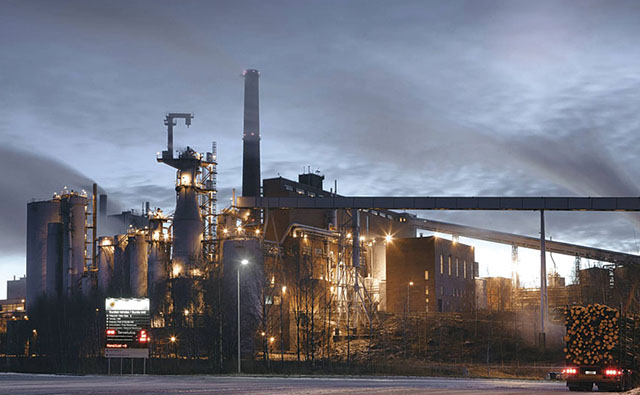Industry News, Coatings
Bio-Based Solutions for Coatings

Industry News, Coatings

Image: pcimag.com
In 2012, the Stora Enso Biomaterials Division was established to help the company transition and address megatrends such as urbanization, climate change and resource scarcity. Working on technology development and commercialization of bio-based chemical intermediates and by-products of the forest industry, the division is working with partners on breakthrough innovations to get the most out of wood and offer a wider range of bio-based solutions. Wood continues to be the company’s most important raw material.
New technologies are enabling the company to extract hemicellulose, sugars and lignin from biomass more efficiently and create new, value-added products from these different fragments. Through four product platforms and one technology platform, the division is transforming nonfood-competing, non-GMO, second-generation biomass into solutions. These include:
One product platform the division has been focused on is lignin, traditionally discarded in the pulp production process – only around 50% of the tree is used for its cellulose fibers, and lignin is usually discarded or burned for energy.
The second most abundant organic polymer in the world, lignin makes up 20-30% of the composition of wood. There are many varieties of lignin, which vary according to the extraction process. It is not a ‘one-size-fits-all’ product, as different types of lignin vary considerably in performance.
How is the lignin extracted? Cooking chemicals used to extract cellulose fibers from wood in a pulp mill are recycled in the recovery line. Black liquor contains cooking chemicals (white liquor) and the residues from wood, mainly lignin. In the recovery boiler, chemicals are recovered and the rest – mainly lignin – is burned for energy. Stora Enso extracts part of the lignin from the black liquor before it goes to the recovery boiler, using LignoBoost™ technology.
Post-extraction, the lignin is treated with chemicals, washed and pressed to reduce the moist content. After pressing, the moist content is around 65%. The lignin is then dried in a ring dryer – to achieve up to 97% dry content – then packed.
Although lignin extraction is not new, the lignin produced at the company’s Sunila Mill in Finland is purer and has a much higher dry content, meaning transportation costs are also reduced and it is more suitable for a range of applications as well as to use as fuel to power a lime kiln. In Sunila’s lime kilns, lignin is also burned to generate energy, which has led to dramatic carbon emission reductions. The mill now runs practically fossil-free in normal operations.
Lignin is plentiful and versatile, and has a large potential as a green energy generator. However, it is often still perceived as having limited business opportunities. Lignin is ideal for applications requiring a rigid structure and can be extracted from plant-based material to be used as a renewable, cost-efficient, nontoxic alternative to fossil-based raw materials – including phenol in coatings.
After years of successful lignin extraction at Sunila, this year the company launched Lineo™, a renewable replacement. Used in a range of applications where fossil-based materials are currently dominating the market, Lineo can substitute oil-based phenolic materials that are used in resins for coatings and adhesives, e.g. in plywood, oriented strand board (OSB), laminated veneer lumber (LVL), paper lamination and insulation material. In the future, lignin could also be developed into carbon fiber applications. Lineo is a free-flowing brown powder with superior dispersibility and can be stored for a long time. With a higher reactivity and purity, this lignin is high-quality and consistent from batch to batch. In 2018, Lineo was awarded the Bio-Based Product of the Year at the Bio-Based World News Innovation Awards.
Lignin’s numerous positive specifications means it has many advantages over fossil-based equivalents such as phenol and formaldehyde, making it an ideal candidate for producing new materials and intermediates. Phenol has a range of issues – it is hazardous, volatile in price, difficult to handle and store. Phenol’s typical smell and toxicity also cause issues in manufacturing facilities. Lignin has a high functional versatility and is easier to handle compared to conventional raw materials. Different levels of lignin dryness can be supplied, according to customer demand.
Research and development related to lignin continues to take place, and business opportunities are identified in the renewable materials market.
Beyond lignin, the company is also currently focused on micro-fibrillated cellulose (MFC), a special cellulose material produced by processing cellulose fibers mechanically into fibrils, which has applications in liquid packaging board, among others.
Seven percent of Stora Enso’s 2017 sales came from products or services that did not exist three years ago. The company is optimistic about the future and its product offering in the bioeconomy as bio-based products are already impacting the petro-based supply chain.
The company is hopeful that business opportunities for lignin are increasingly recognized and that brand owners will become more aware of lignin as a more sustainable and efficient product with a predictable cost structure.